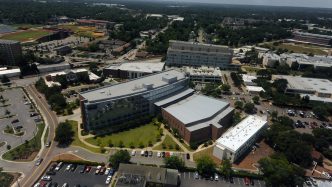Augusta University Health is good medicine for Georgia in more ways than one.
The health system affiliated with Augusta University provided care to more than 410,000 adults at AU Medical Center and more than 110,000 young patients at Children’s Hospital of Georgia in 2016. That same year, AU Health contributed over $1.5 billion to the financial wellbeing of the state, according to the latest data from the Georgia Hospital Association.
AU Medical Center infused the economy with $1.47 billion, and Roosevelt Warm Springs Rehabilitation and Specialty Hospitals – operated by AU Health through a partnership with the state – contributed $31 million for a combined $1.5 billion.
“Our top priority is to meet the health care needs of our patients and families,” said Lee Ann Liska, CEO of AU Medical Center. “Beyond that, we add to the economic well-being of our community, region, and the state by providing significant, market-driven compensation to our employees and by purchasing goods and services needed for delivery of our state-of-the-art care.”
This care included the delivery of 1,500 babies and critical care of nearly 2,000 patients in the region’s only level I trauma center, as well as the delivery of more than 1,500 babies in Labor and Delivery at the medical center. In addition, nearly 6,000 pediatric surgeries were performed and 500 newborns were provided the highest level of neonatal intensive care at the Children’s Hospital of Georgia.
What we do really makes a difference, including the rehabilitation and long-term acute care we provide at historic Roosevelt Warm Springs,” Liska said. “We not only promote economic stability, but we help improve the quality of life for hundreds of thousands of citizens in Georgia.”
Georgia hospitals absorbed more than $1.8 billion in the costs for health care that was provided but not paid for in 2016, according to the GHA. More than $57 million in uncompensated care was provided by AU Health through the Augusta and Warm Springs hospitals.
“The GHA report demonstrates the vital significance of hospitals to the state and local economy,” Liska said.
 Augusta University
Augusta University




